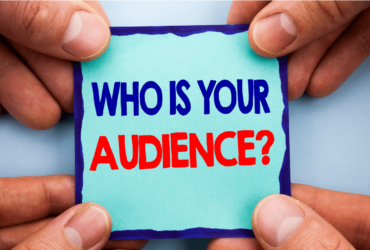“I see,” said the blind man is an age-old, tongue-in-cheek way for a person to let you know they’ve grasped what you’re saying.
But it’s also the way most of your meeting and event audiences absorb content – by seeing. Visual learners, image junkies, picture people, video virtuosos, anime’ animatrons — call ‘em what you will but don’t lose sight (couldn’t resist) of the fact that most of us learn through visuals. Two of every three, in fact.
This is not a ding-ding-ding news flash but it is worth revisiting. Especially as technology and times continue to evolve and accelerate; audiences skew younger and more attuned to onscreen Wow! moments; and society, in general, moves closer and closer to officially declaring smart phones, tablets and all LCD screens anatomical appendages.
A highly regarded study conducted by the University of Alabama-Birmingham concluded:
- 65% of the population are visual learners (eyes wide open)
- 30% are auditory learners (listening)
- 5% are kinesthetic learners (movement)
So, tell me again why your PowerPoint and Keynote images resemble the scribbly Dead Sea Scrolls with nary a picture or petroglyph in sight. And tell me again why your audiences aren’t as engaged and energized as you’d expected them to be.
Might be time for a presentation primer. Here are nine considerations for you as you plan your next meeting, conference or event:
- Not to Be Repetitive But … – Keep the stats above in mind. Two of every three people comprehend through imagery vs. words alone. They’re visual learners (with emphasis on visual). Share that info with your presenters who think they get paid only by the word.
- Having Said that … – Words still matter. But like chocolate mousse, too much of a good thing quickly becomes, well, a bad thing. The quality, quantity and fine crafting of a speaker’s words will always be paramount to an effective presentation but tone, onstage energy, eloquence, delivery, ability to connect with an audience, etc. are all part of the equation, too. Great imagery is the cherry on the top. And your audience expects a cherry.
- First understand the Importance of the Point Being Made Then Bring it to Brilliance – If your CEO is announcing a major, new customer-centric approach to business, your screens should be loaded with dynamic imagery of smiling customers engaging happily with your products and/or your people. Audiences will grasp the words being spoken much like the subtle enjoyment of pleasing background music but the point being made will come brilliantly to life through carefully selected imagery.
- Give Serious Thought to Who’s Designing Your Images – Just because Sally or Sam down the hall spend their weekends tinkering with PowerPoint doesn’t mean their talents will translate to a ballroom full of visual learners. There’s a whole community of talented graphic design professionals in your backyard who specialize in live audience presentations and know what it takes to make things “Pop!”.
- Speaking of “Pop!” – A Google image search for a shot of a happy family or the Grand Canyon or a New York City skyline is going to pale by comparison to a high-resolution shot of that happy family; a brilliant, time-lapse sunset shot of the Canyon’s west rim; or an extreme angle of NYC skyscrapers looking Heavenward. Be picky with your pics. They matter big time!
- Take Some Cues from Television – Bumpers, lead-in segments, highlight packages, onscreen GFX, even commercials can trigger ideas for your next speaker presentation. Turn your next binge-watching afternoon into a simultaneous brainstorming session, too. Expect these ideas to include a mix of stills, video, animation, etc.
- Color Me Engaged – There’s a reason kids’ cartoons and video games are clear, bright and colorful. It keeps them engaged. Your audience hasn’t outgrown that — and never will — so dazzle ‘em!
- Don’t Forget ‘The Mind’s Eye’ – Perhaps the most creative image-maker is between your ears. You can powerfully engage your audience via effective story-telling. Put a single, spectacular image onscreen then speak to it. Share your compelling story and let audience minds wander, using your words to trigger their imagination. Not all images necessarily have to be onscreen.
- Did I mention that ‘two out of every three’ thing? – Yeah, I did. By now, you get the point: Visual. Learners.
If your speakers are onstage simply regurgitating the same-ol’ same-ol’ with updated performance numbers and your audience is nodding, it doesn’t mean they’re absorbing anything. It means they’re being polite. For decades, studies have shown an audience will only retain 10% of what you communicate (on a good day, that is) so rev it up and create an eye-popping experience that will blow your visual learners away!
CONCLUSION
Two of every three people are visual learners. If you want to successfully connect, engage and motivate them, you must communicate to them on their terms. The eyes have it!
Cheers,





